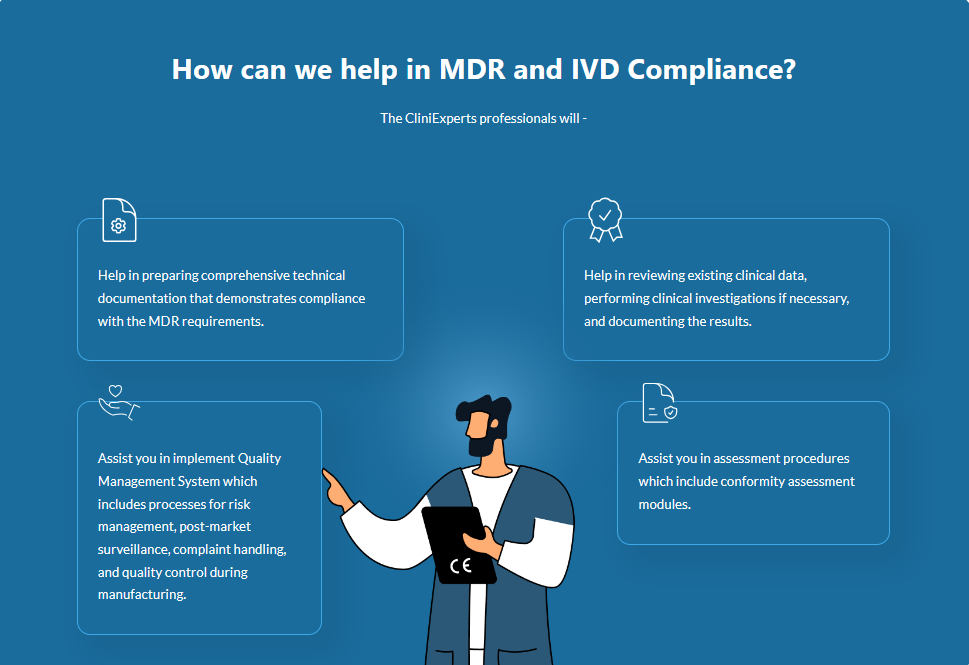Deciphering Medical Device Registration in the EU: A Comprehensive Handbook.

Introduction:
Navigating the regulatory maze of medical devices within the European Union (EU) can be daunting, particularly concerning registration. This comprehensive guide aims to empower manufacturers with the requisite knowledge to effectively navigate the Medical Device Registration EU process, ensuring compliance with the Medical Devices Regulation (MDR) and instilling confidence in bringing their medical devices to the European market.
The Evolving Regulatory Landscape
The Medical Device Regulation (MDR) (Regulation (EU) 2017/745) fully replaced the previous Medical Devices Directive (MDD) in May 2021. The MDR introduces more stringent requirements than its predecessor, with the objective of enhancing the safety, quality, and transparency of medical devices available in the EU.
Key Aspects of Medical Device Registration Classification:
The initial step entails classifying your device based on its intended purpose and inherent risks. The MDR outlines four risk classes, ranging from Class I (Lowest Risk) to Class III (Highest Risk), each dictating specific conformity assessment routes required for CE marking, which is mandatory for placing medical devices on the EU market.
Unique Device Identification (UDI): All medical devices in the EU must be equipped with a Unique Device Identification (UDI) system, facilitating efficient traceability, vigilance, and market surveillance. Manufacturers must assign UDIs to their devices and submit them to the European Database on Medical Devices (EUDAMED).
EUDAMED Registration: EUDAMED serves as a centralized repository for information on all medical devices and stakeholders involved in the EU supply chain. Manufacturers are obligated to register themselves and their devices on EUDAMED, providing comprehensive details such as device information, technical documentation, and contact details of the Person Responsible for Regulatory Compliance (PRRC).
Conformity Assessment Procedures: The conformity assessment procedure applicable to your device is contingent upon its risk class. Lower-risk devices (Class I and IIa) typically involve fewer complex procedures, while higher-risk devices (Class IIb and III) necessitate involvement from a Notified Body, independent organizations designated by the EU to assess compliance with MDR requirements. Conformity assessment procedures may involve internal production control system audits, technical documentation review, and clinical investigation and evaluation by a Notified Body.
Additional Considerations
To ensure safety and functionality, medical devices undergo conformance evaluation by the European Union (EU), with involvement from the European Medicines Agency (EMA). Additionally, medical devices are regulated at the EU Member States level.
Technical Documentation: Manufacturers must compile comprehensive technical documentation demonstrating their device's adherence to MDR requirements, serving as the basis for conformity assessment by Notified Bodies.
Person Responsible for Regulatory Compliance (PRRC): It is mandatory to appoint a PRRC within the EU, responsible for ensuring MDR compliance throughout the device's lifecycle, including post-market surveillance activities.
Post-Market Surveillance: Manufacturers have ongoing obligations to monitor their devices after-market launch, including reporting serious adverse events and incidents to relevant authorities and implementing Corrective and Preventive Actions (CAPA) to address identified risks or non-conformities.
Seeking Expert Guidance: Given the intricacies involved, it is highly recommended for manufacturers to seek guidance from qualified regulatory consultants or legal professionals specializing in EU medical device regulations. They can provide invaluable assistance in navigating the registration process, ensuring compliance with MDR requirements, and facilitating successful market entry in the EU.
Overview of the Medical Device Registration Process
|
Stage |
Description |
|
Classification |
Categorize device based on risk (Class I-III) |
|
Unique Device Identification (UDI) |
Assign unique identifier for traceability |
|
EUDAMED Registration |
Register device and details in EUDAMED database |
|
Conformity Assessment |
Follow procedures based on class (internal audit, notified body review, etc.) |
|
Additional Considerations |
Technical documentation, Person Responsible for Regulatory Compliance (PRRC), Post-Market Surveillance (reporting incidents, CAPA) |
Table 1: Overview of the Medical Device Registration Process
Conclusion
Comprehending and adhering to the medical device registration EU process is imperative for manufacturers seeking to introduce their products to the European market. By complying with MDR requirements and leveraging expert guidance, when necessary, manufacturers can ensure patient safety, regulatory compliance, and a prosperous market presence within the EU.
- Questions and Answers
- Opinion
- Motivational and Inspiring Story
- Technology
- Live and Let live
- Focus
- Geopolitics
- Military-Arms/Equipment
- Seguridad
- Economy
- Beasts of Nations
- Machine Tools-The “Mother Industry”
- Art
- Causes
- Crafts
- Dance
- Drinks
- Film/Movie
- Fitness
- Food
- Juegos
- Gardening
- Health
- Home
- Literature
- Music
- Networking
- Other
- Party
- Religion
- Shopping
- Sports
- Theater
- Health and Wellness
- News
- Culture

